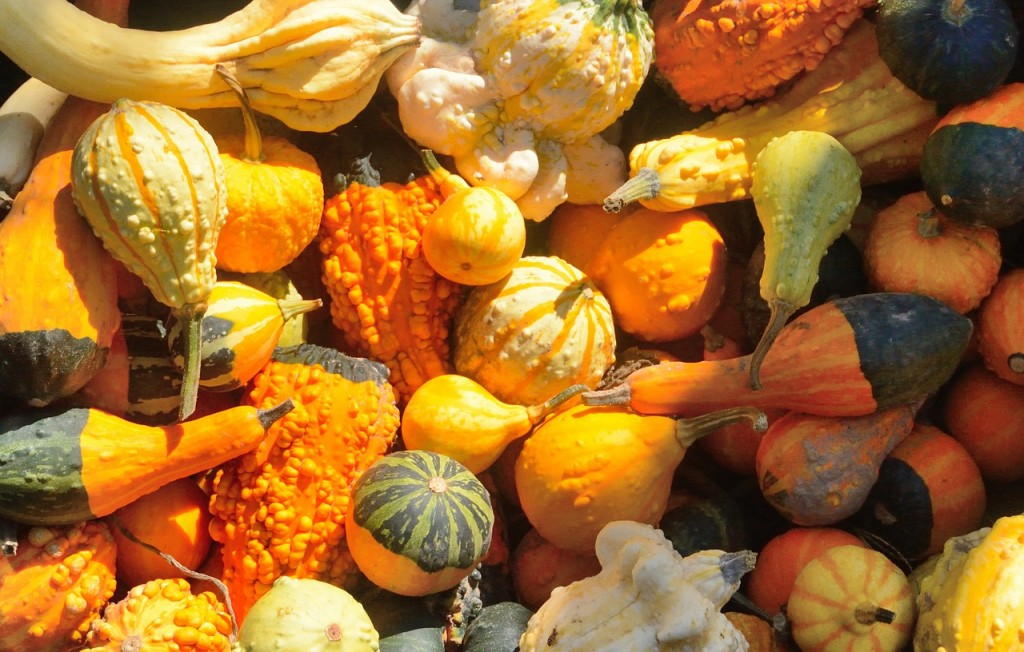Difference between squash and gourd
Squashes and gourds are two similar plants. They both are part of the Cucurbita family and both require the same conditions for proper growth including rich soil, full sun and a long, warm season. Moreover, both of these are sprawling plants that have long vines and large leaves. These were just some of the similarities that are the reason that these two plants are often spoken of together. However, there are many characteristics in which they are different as we shall now see.
Differences
There are a number of stages in the life cycles of squashes and gourds in which the two are different. They have different requirements, harvesting and storing techniques as well as different uses.
Planting
As mentioned before, both these plants need warm and moist soil to germinate well. However, most of the gourd varieties will take somewhere between a hundred and 180 days to mature. This is much longer than the growing season for either winter squash or summer squash. The latter mature in about 45 to 60 days whereas the former take between 80 to 100 days.
Moving on, squash seeds can be sown into the ground directly a couple of weeks after the last frost. Gourd seeds, however, need to be started indoors about a month before planting time. Some such as the Luffa gourds, need special treatment to germinate because of their tough outer coating. A process known as scarification is carried out whereby the seed coats are nicked using a nail file and then soaked for 24 hours in warm water before they can be planted.
Bloom
The two plants differ in their bloom. Although both of these plants produce large flowers of both sexes that are pollinated by bees, squash flowers bloom during the day and are bright orange whereas some gourds such as the Lagenaria, bloom only at night and produce white flowers. Others, such as Luffa and Cucurbita gourds bloom during the day and produce yellow and orange flowers.
Harvesting and storage
A very important difference between squash and gourds is the method used for their harvesting and storage. Gourds are picked once the vines have dried and shrivelled. The next step is to wash them with soapy water, dry them and then coat them with rubbing alcohol. They are ready for use after the drying process which may take up to six months or even longer. In contrast to this, summer squashes are best picked once they attain a length of about 6 to 8 inches. The fruits are twisted or cut from the vines and then stored in the refrigerator. They have high perishability and are best eaten within three days. Winter squash are normally harvested in the fall once the fruits have their full colour and a hard rind. They are not perishable and can be stored for up to six months in a location that is cool and dry.
Use
Squashes are known for their culinary uses. Summer squashes can be added to soups, casseroles etc. whereas winter squashes are first roasted or steamed to soften their hard flesh and then consumed. On the other hand, gourds are not edible. They can be used for decorative purposes.
Summary
-
Gourd varieties take somewhere between a hundred and 180 days to mature; summer squash matures in about 45 to 60 days, winter squash take between 80 to 100 days to mature
-
Squash seeds can be sown into the ground directly a couple of weeks after the last frost; Gourd seeds need to be started indoors about a month before planting time, some such as the Luffa gourds, need special treatment to germinate because of their tough outer coating
-
Squash flowers bloom during the day and are bright orange whereas some gourds such as the Lagenaria, bloom only at night and produce white flowers; other gourds are similar to squash
-
Gourds are picked once the vines have dried and shrivelled, washed with soapy water, dried and then coated with rubbing alcohol, drying process may take up to six months or longer; summer squashes are best picked once they attain a length of about 6 to 8 inches, the fruits are twisted or cut from the vines and then stored in the refrigerator, have high perishability, are best consumed within three days, winter squash are normally harvested in the fall once the fruits have their full colour and a hard rind, they are not perishable and can be stored up to six months
- Squashes are known for their culinary uses; gourds are not edible, have decorative uses
- The difference between Royal icing and Buttercream icing - March 22, 2015
- Difference between stuffed and deep dish pizza - March 21, 2015
- Difference between Crane and Heron - March 20, 2015
Search DifferenceBetween.net :
Leave a Response
References :
[0]http://pixabay.com/en/squash-pumpkins-autumn-farm-458023/

